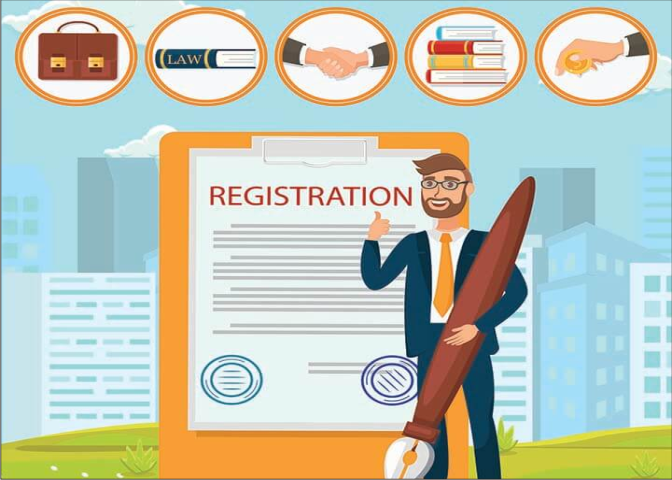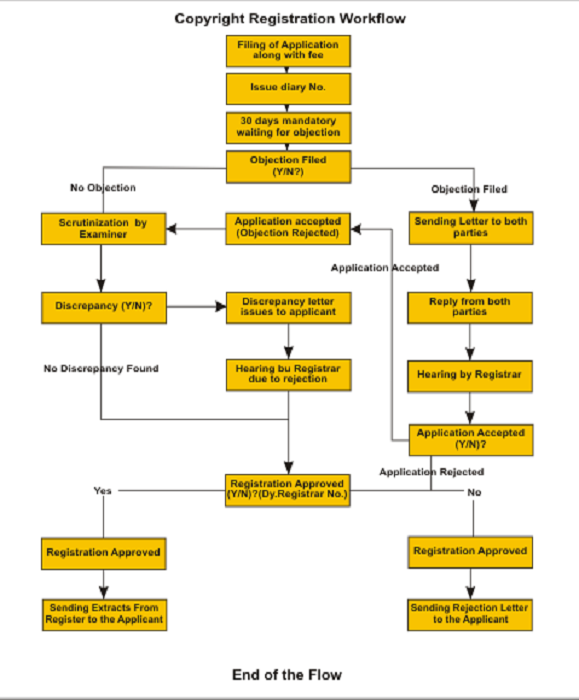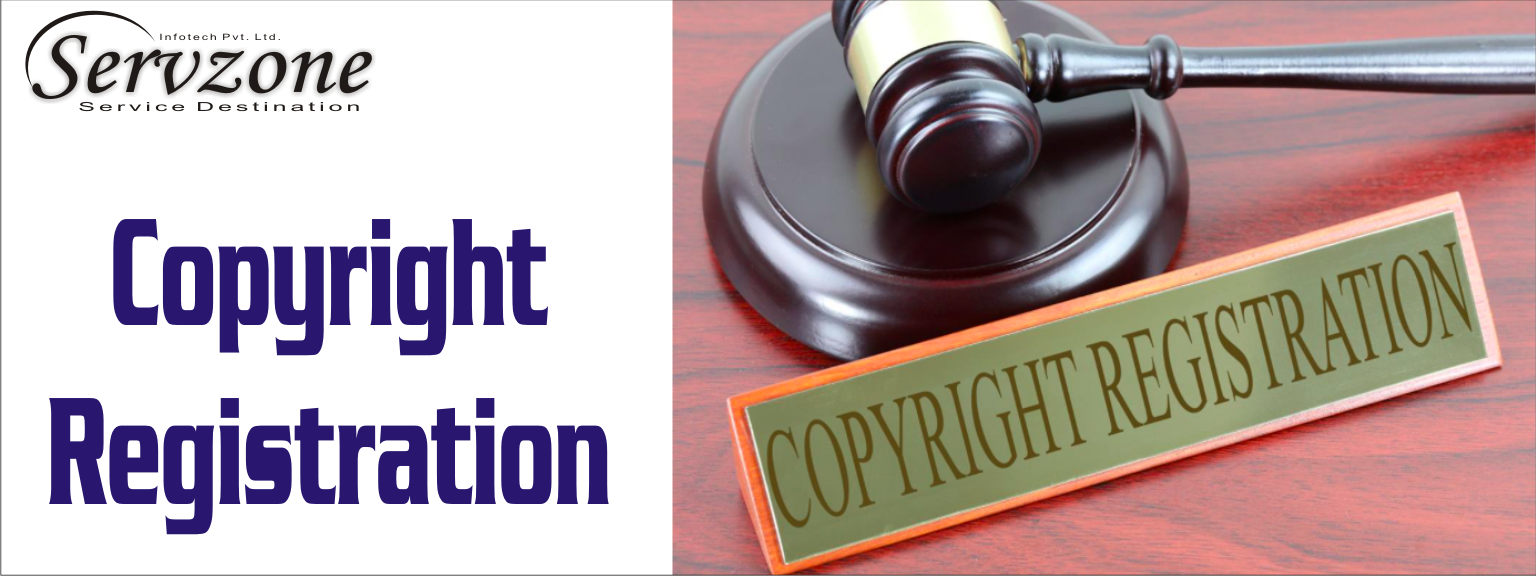Get Started With
servzone
Overview
Copyright is a valid right to emulate a person's work. A copyright grants the element owner an exclusive right to his or her work. Creators of 'literary', atic theatrical ', and musical' and works' artistic works and 'producers' of cinematograph films and music voice recordings can obtain rights to their original work by obtaining copyright licenses on their efforts and works. Copyright prevents improper use of original work and thus prevents and rewards creativity. Creators are given a bundle of rights of reproduction, communication to the public, adaptation and translation of work. Although copyright protected “ Copyright Writ, 1957 ” , although there are several amendments to the Act.
Copyright is different from a patent. In a patent, ideas are protected, copyright shields expression, not designs. Therefore, while there may be more than one view, a copyright ensures that such an approach results from isn ’ s unless authorized. The copyright period in India is 60 years. Copyright can be taken for the following works:
- music
- books
- Manuscripts
- movies
- Fashion Design
- Training Manual
- Software
- Literary work
- performance
- Paintings
The Registrar of Copyrights is divided into six categories:
Part A. Literary works other than computer Programs
Part B. Musical Works
Part C. Artistic Works
Part D. Cinematography Films
Part E. Sound Recording
Part F. Computer Programs, tables & Compilations
Fee structures
|
For an application for OBLIGATORY LICENSE: |
Fee |
|
For a license to republish a ‘Literary’, ‘Dramatic’, ‘Musical’ or ‘Artistic’ work (Sections 31, 31A,31B* and 32A) |
Rs. 5,000/- per work |
|
For a license to interconnect any work to the public by Broadcast(Section 31(1)(b)) |
Rs. 40,000/- per applicant/per station |
|
For a license to republish a Cinematograph Film (Section 31) |
Rs. 15,000/- per work |
|
For a license to republish a sound recording (Section 31) |
Rs. 10,000/- per work |
|
For a license to perform any work in public (Section 31) |
Rs. 5,000/- per work |
|
For a license to publish or communicate to the public the work or translation (Section 31A) |
Rs. 5,000/- per work |
|
For a license to publish any work in any format that is useful to a person with disabilities (Section 31B) |
Rs. 2,000/- per work |
|
For an application for a license to produce and publish a translation of a Literary or Dramatic work in any Language (Section 32 & 32-A ) |
Rs. 5,000/- per work |
|
For an application for registration or copyright in a: |
|
|
(a)Literary, Dramatic, Musical or Artistic work |
Rs. 500/- per work |
|
(b) Provided that in relation to any literature or artistic work which is used or is capable in relation to any goods (Section 45) . |
Rs. 2,000/- per work |
|
An application for a change in the copyright details was recorded in the register of copyright: |
|
|
(a)Literary, Dramatic, Musical or Artistic work |
Rs. 200/- per work |
|
(b) Provided that in relation to any literature or artistic work which is used or is capable of being used in connection with any goods (Section 45) |
Rs. 1,000/- per work |
|
For an application for registration of copyright in a cinematograph film (copyright 45) |
Rs. 5,000/- per work |
|
For an application for registration of change of copyright recorded in the register of copyright in relation to cinematograph film (Section 45) |
Rs. 2,000/- per work |
|
For an application for registration of copyright in sound recording (Section 45) |
Rs. 2,000/- per work |
|
For an application for registration of changes of copyright entered in the register of copyright with reference to sound recording (section) |
Rs. 1,000/- per work |
|
For taking extracts from the indexes (Section 47) |
Rs. 500/- per work |
|
For taking extracts from the Register of Copyrights (Section 47). |
Rs. 500/- per work |
|
For certified copy of the list of copyrights from the register (Section ४ an) |
Rs. 500/- per copy |
|
For a certified copy of the Copyright Board copyright or any other public document in the custody of the Secretary |
Rs. 500/- per Copy |
|
For an application to stop the importation of infringement copies (Section 53) at the place of entry |
Rs. 1,200/- per work |
Benefits
- Prima Facie Testimony
If a litigation situation arises, the copyright protection prima facie provides evidence. Proof is necessary to certify anything in a court of law; As a result, copyright registration is beneficial to creators.
- Protection Extended Even Later the Creators Death
Copyright ’ Assurance of is not limited to early creators ’ Life span; Its efficacy is longer than any other intelligent property. It is safe for writers ’ 60 years of age and after his death.
- Public Record
When a copyright is registered, an official public record is created that helps the imaginative creator prove his or her ownership concerning the copyright.
- For Listing a Case for Invasion or Infringement
A person cannot sue for copyright infringement unless he has filed copyright. Authorization gives the copyright holder the right to seek infringement and damages.
- Guards Owner
Copyright registration gives exclusive rights to the creator of the creative work. The author is entitled to:
- reproduction,
- distribution,
- adaptation,
- dissemination,
- and translation.
- Brand Value
Copyright registration generates goodwill in the market, acts as a record of ownership and can be used for the purpose of selling it further.
- Copyright Functions as an Asset
It is then considered the intellectual property of the owner after copyright registration. This is to tell; It works as an indefinite asset so it can be further applied to get monetary benefits.
Specification of owner's authority
The rights beneath copyright law are divided into two main sets of rights:
Economic Rights:
- The right to procreate
This right enables the owner to create examples of hiring, selling or working ..
- The right to publish the work to the public
The copyright owner has the right to make the work convenient to the public, that is, the performance, distribution or distribution of the work.
- The right to modify and translate the work
The owner can renew the work and reprint it in various forms or on a different medium.
- Right to demand damages upon infringement
The owner has the power to prevent any product from being used without authorization.
Moral Rights:
- The right of paternity
The author must prevent others from claiming any power over copyright. Under assignment or licensing, the owner can make decisions and arrange for work, authorizing authority.
- The right of integrity
It is the rightful owner to prevent any damage or unauthorized changes from working. And withholding anything that might endanger the honor and reputation of the owner.

Some Points
- Copyright prevents the original work of creators from being duplicated by others without authorization.
- Only the creator and authorized person can repeat the original work without fear of copyright laws.
- Original works in a tangible form can be protected under copyright laws.
- It is not necessary to obtain copyright protection, but it is always desirable to do so as it will give the master a certain set of minimum rights over his work and the assurance that no one will be able to copy his work for a minimum period Time. This happiness will always inspire the owner to work more and make more items.
- Copyright automatically becomes effective as soon as a work is created. There isn’t any formality to be completed for claiming copyright.
- Unpublished work can also be registered for copyright, but to register un-published work, a copy of the manuscript must also be sent along with the application.
Importance of Copyright Registration
Starting a string that is not recommended does not matter on a closed occasion that someone sought after the original idea. In fact, the creation of a deceptive or fake craftsmanship ’ Not the kind of happiness that an initial effort can make.
Every simple inventor, artisan or an expert is enthusiastic about preserving the uniqueness and originality of their innovation. On the occasion that you are gladly part of your innovative works, for example, literary original copies, musical compositions, playback records, 3D outlines, a PC program or a thesis, you may be troubled by social risks, e.g. To boot or adjust your work without your consent. To cover every such threat, the Indian government has enacted separate laws to protect intellectual property rights. The government investigates the breakdown of copyright through the Indian Copyright Act-1957
Required Documents
- Articles of the applicant
Designation, Address & Applicant's nationality (registration must be provided for a corporate body)
- Nature of interest
- Details of the product
Sample & Description of work with the URL of the work language
-
The Dates I.e. if the applicant is the original producer or a delegate of the creator
The date when your creative work was first published
Session
Copyright Board: Section 11 of the Act introduces the Corporation to the Copyright Board and allows the Central Government to make the Chairman and the two separate organs equal. It has many essential functions, such as:
- primacy of disputes,
- Permit waiver, etc.
- Copyright Permissions:
Chapter VI, including section 30-32B, deals with grants and licenses
- Permits by Owners of Copyright:
Section 30 of the Act provides for the owner of the copyright in any existing work or the prospective owner of the copyright in any subsequent work. Any interest in power is to be gained by license to make or write it.
- Mandatory License withheld from the public:
Section 31 provides that if the period of copyright in an Indian work, which is published publicly, and the Copyright Board is prohibited from complaining that it would have denied the owner's interest Or will allow the work to be refused or refused to allow the work to be done in public.
- Sanctioned License for the programming of literary and musical performance and sound recording:
Section 31D provisions that prepare any programming organization to communicate to the public through the representation of broadcasting or employment of any literary or musical work and sound recordings that have already been published, the specified conditions Can do this to complete
- End of License:
Section 32B of the Act deals with the terminus of the license. If a license is granted, the owner of the copyright in the work or any person authorized by it publishes a translation of such action in the same language and is necessarily identical to the material to the amount recovered. Is, will be eliminated. For translation of works of the same standard on the same or similar subject in India,
- Other Licenses can be by way of License in unpublished or published works, the benefit of disabled, etc
Registration Process

- User Registration
Copyright registration begins with a user registration on the official website, and will then pass through the user login ID and password.
- Filling up of Application Form of Copyright Registration
Copyright registration is done as application XIV. A prescribed fee is to be paid according to the second schedule of the rules. The applicant should attach a power of attorney (if necessary) along with signing his petition. The power of attorney must be approved by the owner and motivated by the advocate.
- Submission
After submitting the application, you will get an 'acknowledgment number' or 'diary number'. After approval, the entire process will consume you 2 to 3 months.
Copyright - Trademark - Patent
|
CATEGORIES |
COPYRIGHT |
TRADEMARK |
PATENT |
|
Governed Under |
The Copyright Act, 1957 |
Trade Marks Act, 1999 |
The Patents Act, 1970 |
|
Types of Protection & Works |
Protection of original creative expressions like literary works, artistic works, dramatic works etc. |
Unique name protection that makes one brand different from another. Can include names, slogans, logos, shapes, colors, etc. |
Protection of inventions that are novel, original and industrial utility. |
|
Validity and Reach |
Valid for the author's life span + 60 years after his death. Protection available in most countries of the world. |
10 years of validity can be made forever by renewing the trademark every 10 years. In order to claim rights, each country must be individually applicable to the state in nature. |
Validity for 20 years from the day the first application is made. It is also a territorial authority and therefore it is effective only within the territory of India. Different patents are required for each country where protection is required. |
|
Secures |
Copyright protects creative or intellectual creations. |
Trademarks protect the branding under which products and services are sold. |
The
patent makes inventions that are useful to the world and have some use. e.g. New invention in pharmaceutical industry. |
|
Right comes into Existence |
Exclusive rights on copyright are created the moment the author works. |
Once the trademark is registered, the applicants of the mark can claim the said mark in full. Registration usually takes 12–18 months. |
Patent registration takes about 2-3 years. But the owner can stop claiming another patent correctly the moment he applies for a provisional patent. |
|
Provisional application required |
No provisional application is required. |
The trademark registration does not include a provisional application, but it requires a trademark search. |
One gets 12 months time for provisional application to complete a full specification, and claims a priority date. |
|
Symbolic representation |
No symbolic representation to show registration. |
Used when registration is in process: ™ Used when registration is complete: ® |
No symbolic representation to show registration. |

GST Registration

PVT. LTD. Company

Loan

Insurance


